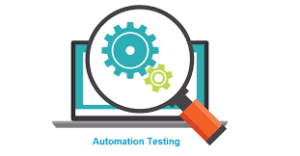
8 Software Testing Practices That Software Testers Must Embrace
A great many individuals utilize versatile and work area applications consistently – generally without contemplating the background work that went into making them. What’s more, however cl, clients positively notice when a bug endures and adversely influences their experience, and relatively few individuals stop to contemplate how pleasant is the point at which an application isn’t buggy.
The overlooked yet truly great individuals who work to ensure you never ponder them: application analyzers. They’re individuals who put an application through different difficulties before it’s delivered, to distinguish likely weaknesses or highlights that don’t work as expected.
Keen on turning it into an application analyzer? The following are a couple of ways that apps testing companies incorporate to do it effectively.
1. Prioritize User-Experience

The best analyzers think like clients, imagining all potential situations that could happen. What will potential clients need from the application? How might they utilize it? Will anything confound them? Is there something they might do that could “break” the application? Responding to these inquiries initially is significant for a fruitful application test.
Ragu Masilamany, VP of Organization Virtualization at Amdocs, noticed that this isn’t simple all the time. ” Envisioning the client’s experience is particularly difficult while growing new sorts of items that don’t have laid out use designs or a characterized client populace,” he says. In any case, he proceeds, “The people who try to be programming analyzers should have the option to envision how the item will be utilized and the apparent client experience.”
2. Plan your tests to fail.

In school, no one needs to step through an exam they’re intended to come up short. Application testing is something else entirely. The harder the test is to pass, the more successful it will be at uncovering shortcomings.
Leo Laskin, senior arrangements modeler at Sauce Labs, says, “Don’t lash out or lose energy when something you’ve been coding for some time doesn’t work. Configuration tests to fall flat. This will assist with guaranteeing you’ve endeavored to take out all bugs and issues when your item is delivered.”
Titus Fortner, individual senior arrangements engineer at Sauce Labs, says to plan the test so that it gives helpful data whatever the result: ” Ensure that any test composed gives important data both when it passes and when it fizzles.”
3. Keep tests a little yet more continuous.

There’s a compelling reason to need to make long, muddled tests. More modest tests can be similarly compelling, and they make it simpler to test while the application is as yet being created (and changed likewise) instead of hanging tight for it to be finished. According to Laskin, “Keep tests little. After you’ve composed code, it implies time to test. Try not to think you need to run a huge elaborate test like clockwork. Keeping tests little permits a fast pivot and gives you an additional opportunity to zero in on making code.”
4. Automate testing whenever the situation allows.

On the off chance that incessant application testing is expected at an organization, mechanization can save a ton of time and work. Many groups are now embracing this cycle. ” Late programming improvement rehearses are embracing a serious level of mechanization, utilizing robots to test programming items,” makes sense Masilamany. ” Therefore, programming analyzers not just have to recognize ‘radiant day’ and ‘stormy day’ situations to test; they additionally need to foster the product that robotizes these test situations so the item can be tried by machines many, commonly during the turn of events and quality affirmation stages for the best outcomes.”
Laskin concurs with the advantages of computerization: ” Today, computerized testing can give speed and proficiency and test various situations rapidly. The simplicity of robotized testing likewise implies that fledgling engineers can figure out how to execute and dominate tests without master information.”
A couple of Laskin’s tips for fruitful programmed tests: ” While composing automated tests, keep them little with the goal that they run rapidly – you need to have the option to give results to your groups as quickly as could be expected. Line up with your engineers and affirm they’re ready to compose code that is enhanced for computerized testing.”
In any case, Fortner takes note that few out of every odd test can (or ought to) be mechanized. ” Be wise in what and how you choose to mechanize,” he says. ” Automation tests ought to be short, engaged, and repeatable.”
5. Include the Team.

Some of the time the designers are likewise the application analyzers, yet in any event, when they’re discrete jobs, the two ought to be cooperating for ideal outcomes.
“Collaboration makes the fantasy work,” says Laskin. This is particularly significant while computerized testing is integrated: ” While coding or working with a coder, ensure everybody is in total agreement and composing code for robotized testing. This kills any disarray and guarantees that the testing system is assisted.”
After a test is directed, significant data and results should be imparted to the dev group. ” Gather measurements and show them to your group,” says Fortner. ” Try not to permit them to be disregarded.”
6. Test both the look and capability of the application.

A few engineers and analyzers might focus on investing, and others could zero in on capability but overlook feel. It is critical to Figure out some kind of harmony.
“Initial feelings matter. Be that as it may, you shouldn’t simply zero in your tests on the visual and plan parts of your application,” says Laskin. ” Highlights should be completely tried too – particularly the work processes that are generally essential to the general client experience. If you don’t convey what clients expect (and the business’ expectations), the eye-satisfying application you were chipping away freely still be uninstalled…and best of luck with winning shoppers back when that occurs.”
7. Test across numerous frameworks and gadgets.

Testing an application on only one gadget/framework precludes the immense measure of experiential assortment that various ones can introduce. Regardless of whether your application is accessible on one sort of gadget (for example it’s just in the Macintosh Store), you need to represent an alternate encounter across unambiguous gadgets – whether it’s the iPad or every one of the various ages of iPhones.
“The truth of the matter is, applications will show up and work distinctively on each gadget and stage so you need to guarantee your code functions as wanted across all gadgets,” says Laskin. ” Designers need to guarantee their applications capability well (and look satisfying) across portable and work area gadgets, yet unique working frameworks, and the mind-boggling cluster of gadgets from the most recent iPhone X to iPhone 4 and the Samsung Cosmic system to research Pixel. “
8. Exploit open-source devices.

Programming analyzers have their networks, and you can track down a lot of open-source instruments to make your life more straightforward. ” There are various open source apparatuses and advancements accessible for programming analyzers,” says Masilamany. ” They should know about those apparatuses and collect them to make test suites fabricated explicitly for the item being tried.”
Fortner encourages us to see open-source assets while making general computerized tests. ” Utilizing open source networks and tooling permits you to capitalize on your test-computerization endeavors.”
Laskin wraps up by helping us to remember the stakes in question. ” The background cycle of testing guarantees that items work for clients,” he says. ” While it sounds sufficiently basic, as the present clients become knowing (and restless), guaranteeing a consistent, shortcoming-free, and superb experience is basic to application achievement.”
Author Bio:
Aimee Garcia is a Marketing Consultant and Technical Writer at Software Testing Lead. She has 5+ years of experience in Digital Marketing.







